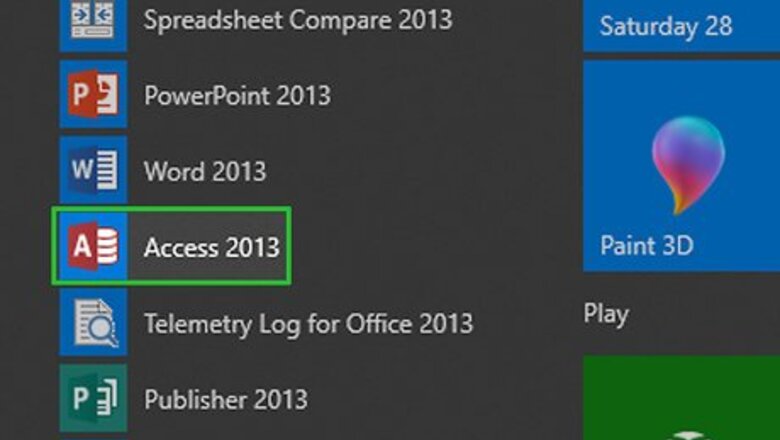
views
Using Microsoft Access
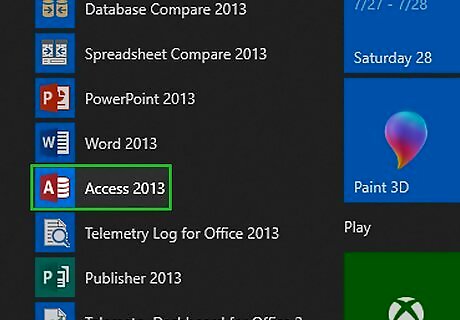
Open Microsoft Access. It's the red app with an A. Doing so opens the Access template page. Access is designed for use with Excel and comes bundled with Excel in Microsoft Office Professional and is only available for Windows.
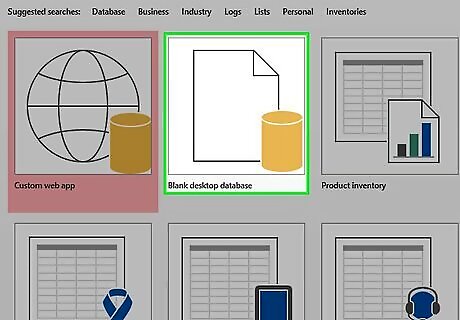
Click Blank database. This option is in the upper-left side of the window. If you want to use a different template for your Access database, select the template that you want instead.
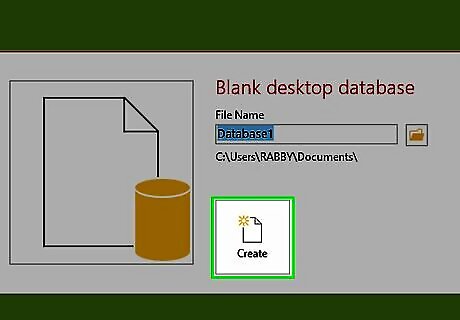
Click Create when prompted. This option is in the bottom-right corner of the pop-up window. Your Access database will open.
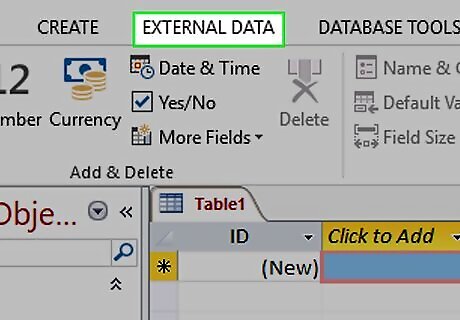
Click the External Data tab. It's in the menu bar at the top of the Access window.
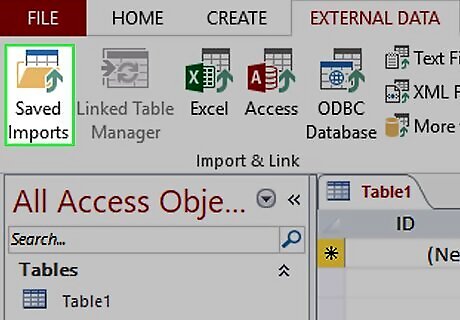
Click Saved Imports. You'll find this in the far-left side of the External Data toolbar. A drop-down menu will appear.
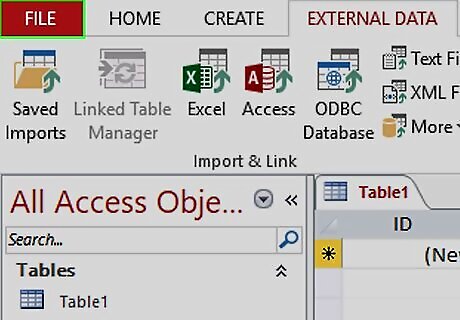
Select File. It's in the drop-down menu. Selecting this option prompts a pop-out menu.
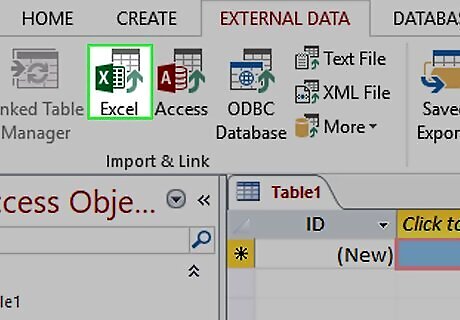
Click Excel. This option is in the pop-out menu. Clicking it prompts the import window to open.
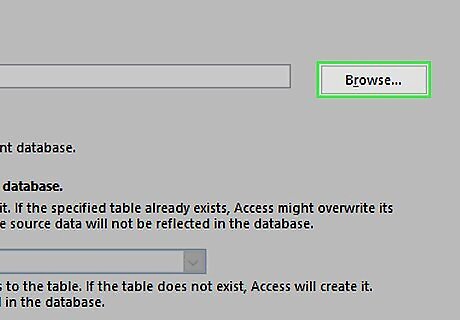
Click Browse. It's in the upper-right part of the window.
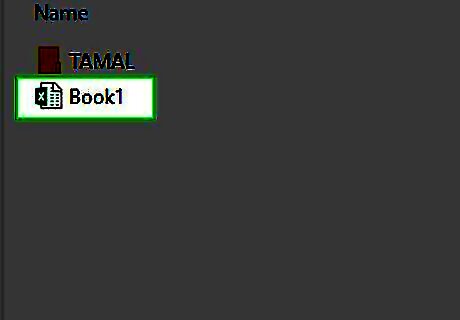
Select an Excel spreadsheet. Go to the folder in which your Excel spreadsheet is located, then click the Excel spreadsheet which you want to open.
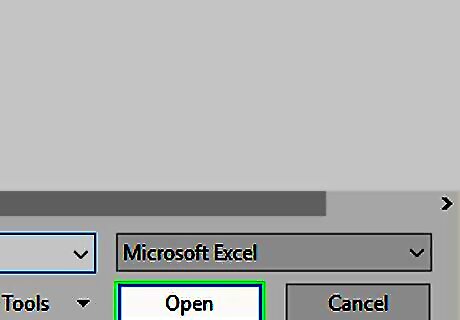
Click Open. It's in the bottom-right corner of the window.
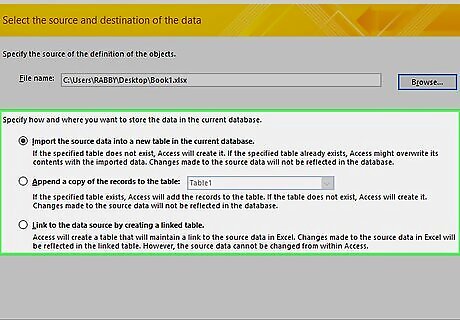
Specify how to transfer to the data. Click the radio button to the left of one of the following: Import the source data into a new table in the current database - Choose this option if you created a new database with no tables or if you want to add a new table to an existing database. By creating a new table you can edit the information in Access. Append a copy of the records to the table - Choose this option if you are using an existing database and want to add the data to one of the tables in the database. By appending an existing table, you can edit the information in Access. Link to the data source by creating a linked table - Choose this option to create a hyperlink in the database, which will open the Excel database in Excel. With this method, you cannot edit the information in Access.
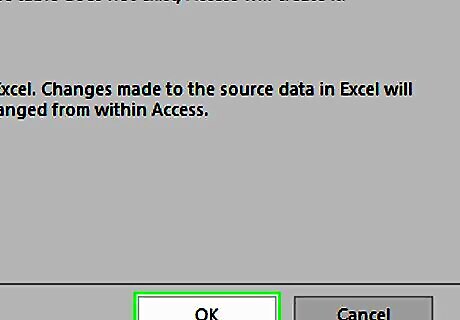
Click OK. You'll find this at the bottom of the window.
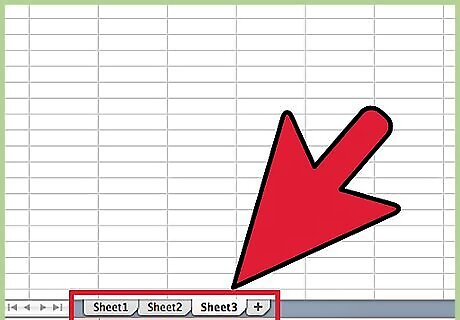
Select a sheet. At the top of the window, click the name of the sheet that you want to import from your selected Excel document. By default, Excel creates workbooks with three spreadsheets labeled "Sheet 1," "Sheet 2," and "Sheet 3." You can only transfer one sheet at a time; if you have information on all three sheets, you must complete the transfer with one sheet and then go back to the "External Data" tab and repeat all the steps for each remaining sheet. You can delete, add, and edit the names of these sheets in Excel, and whatever changes you make will appear in the Access database.

Click Next. It's in the bottom-right corner of the window.
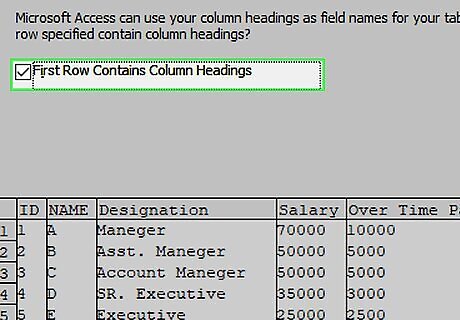
Enable column headings. Check the "First Row Contains Column Headings" box if your Excel sheet has its own column headings in the top row (e.g., the A row). Uncheck the box if you want Access to create the column headings.
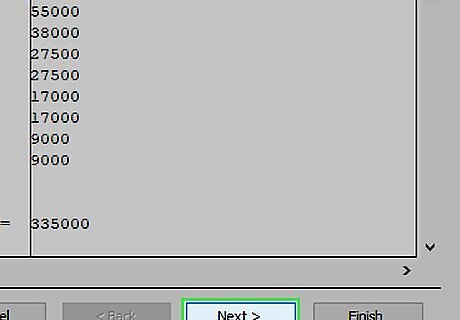
Click Next.
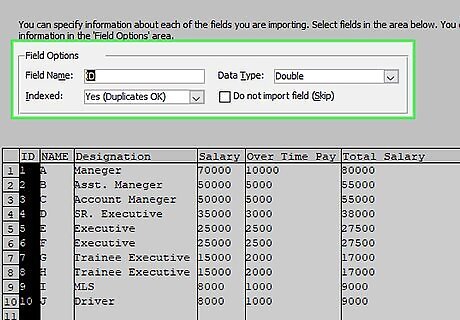
Edit your spreadsheet's columns and fields if needed. If you want to import all the fields from the spreadsheet without change, skip this step: To edit a field, click the column header you want to change, then edit the name of the field, the data type, and/or whether or not it is indexed. If you don't want to import a field, check the "Do Not Import Field (Skip)" box.
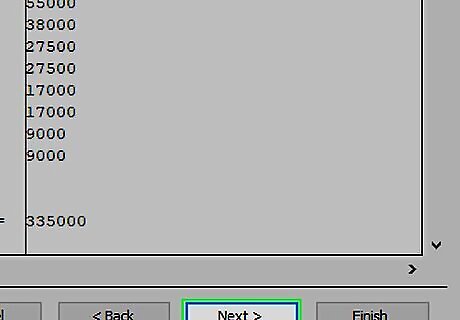
Click Next.
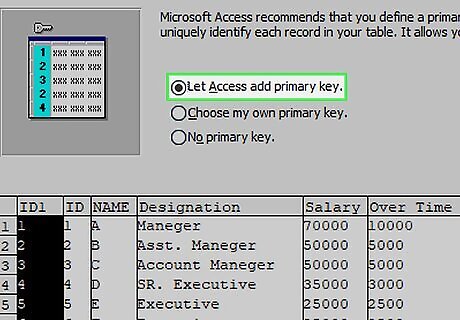
Set the primary key for the database. For best results, leave the default setting here as-is to let Access set the key. You can also set your own key by checking "Choose my own primary key" and entering it in the field next to that option, or you can select "No primary key" (not recommended).
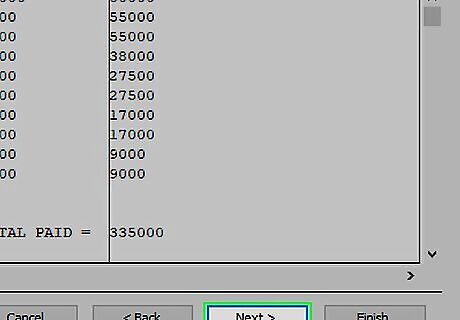
Click Next.
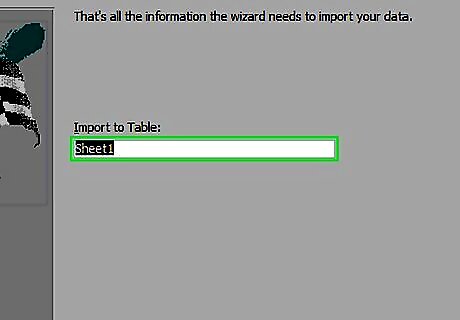
Add a name. Type a name for the sheet into the "Import to Table" field. Skip this step to leave the database set to its default name.
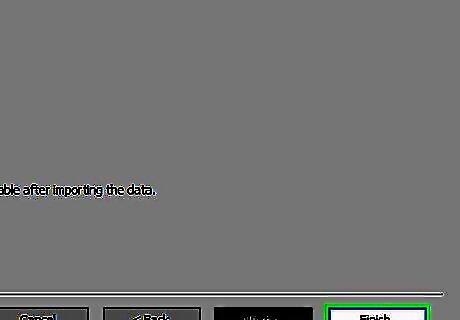
Click Finish. This option is in the lower-right side of the window.

Click Close. It's in the bottom-right corner of the window. This will close the import window and create your database. You can first check the "Save import steps" box if you want to ensure that Access will remember your settings for this database.
Using Third-Party Database Software

Open your Excel document. Double-click the Excel document which you want to convert into a database. If you haven't yet created your document, open Excel, click Blank workbook, and create your document before proceeding.
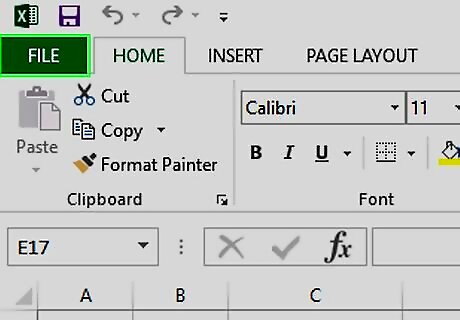
Click File. It's in the menu bar that's either at the top of the Excel window (Windows) or at the top of the screen (Mac).
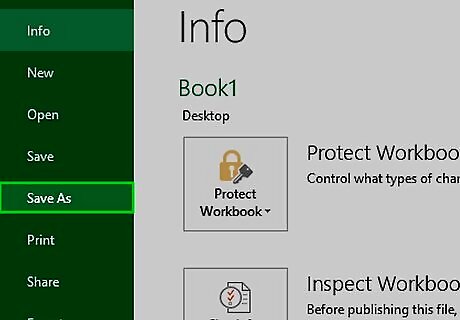
Click Save As. You'll find this option in the File menu.
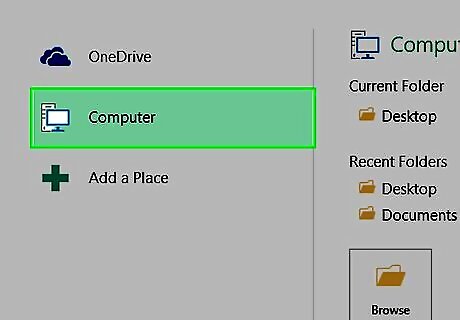
Double-click This PC. It's in the middle of the page. Skip this step on a Mac.
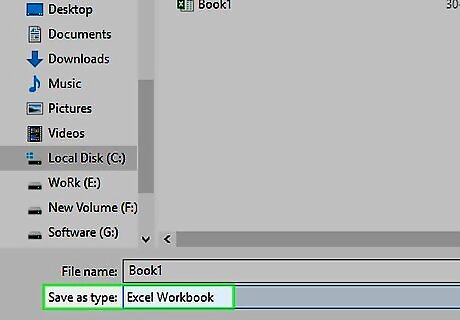
Select a file format. Click the "Save as type" (Windows) or "File Format" (Mac) drop-down box, then select one of the following: If you're using a computer-based database application, click a .CSV (comma separated values) format. If you're using a Web-based database application, click an .XML format. If your Excel document doesn't have any XML data in it, you won't be able to choose XML.
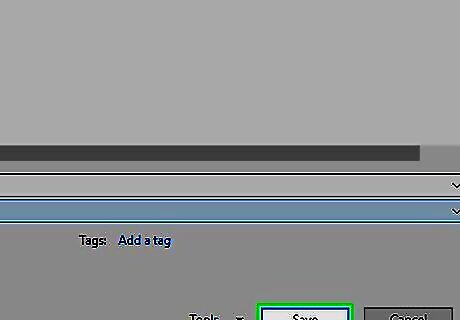
Click Save. It's at the bottom of the window. This will save your document using your selected preferences.
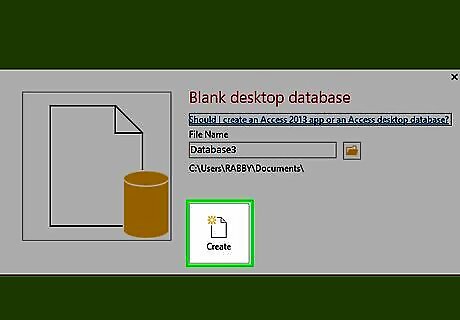
Create a new database in your database application. This process will vary depending on the application that you're using, but you'll usually open the application, click New (or File > New), and follow any on-screen instructions.
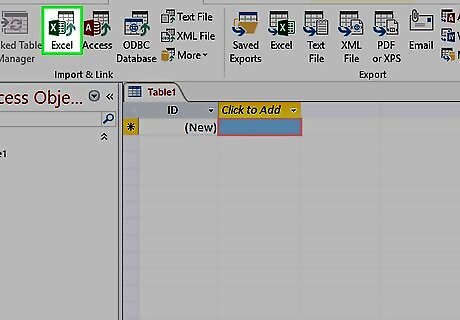
Locate the Import… button. It's often found by clicking the File option, but your database application may vary.
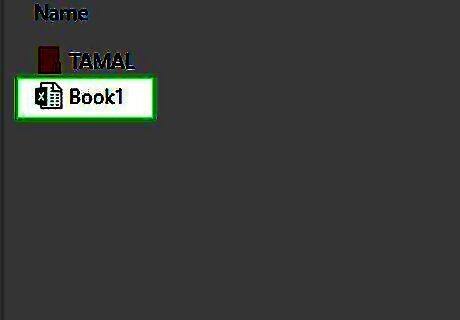
Select your Excel file. Locate and double-click the file you exported from Excel.
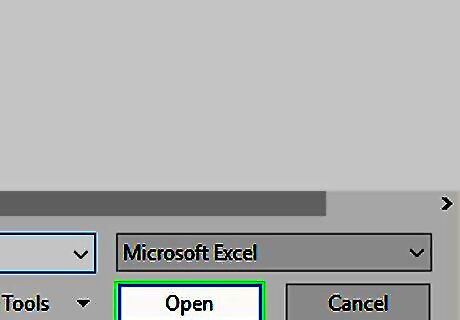
Follow the database app's prompts to import the data.
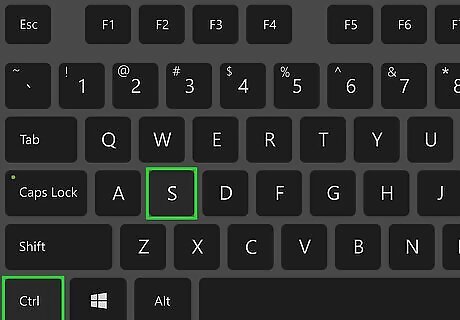
Save the database. You can usually open the "Save" menu by pressing Ctrl+S (Windows) or ⌘ Command+S (Mac).














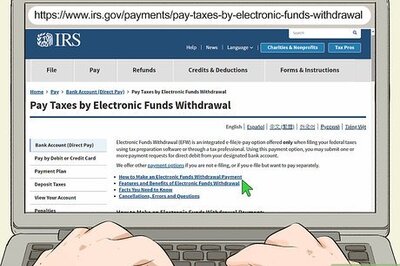

Comments
0 comment